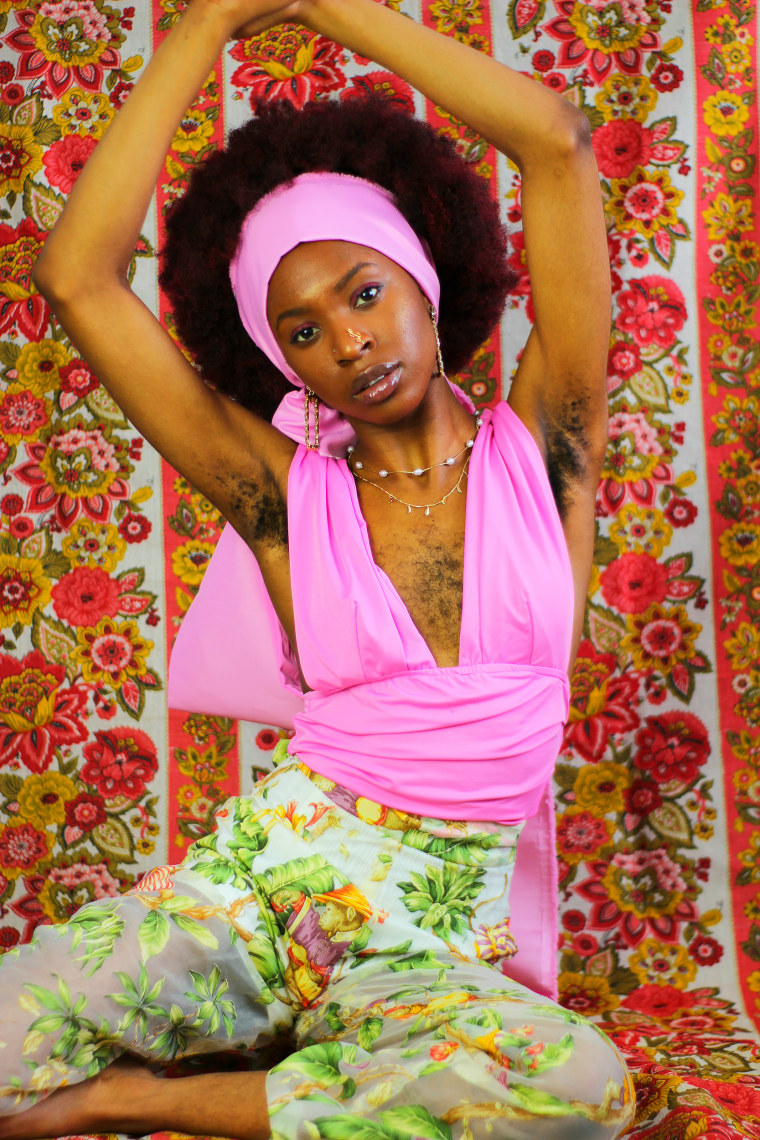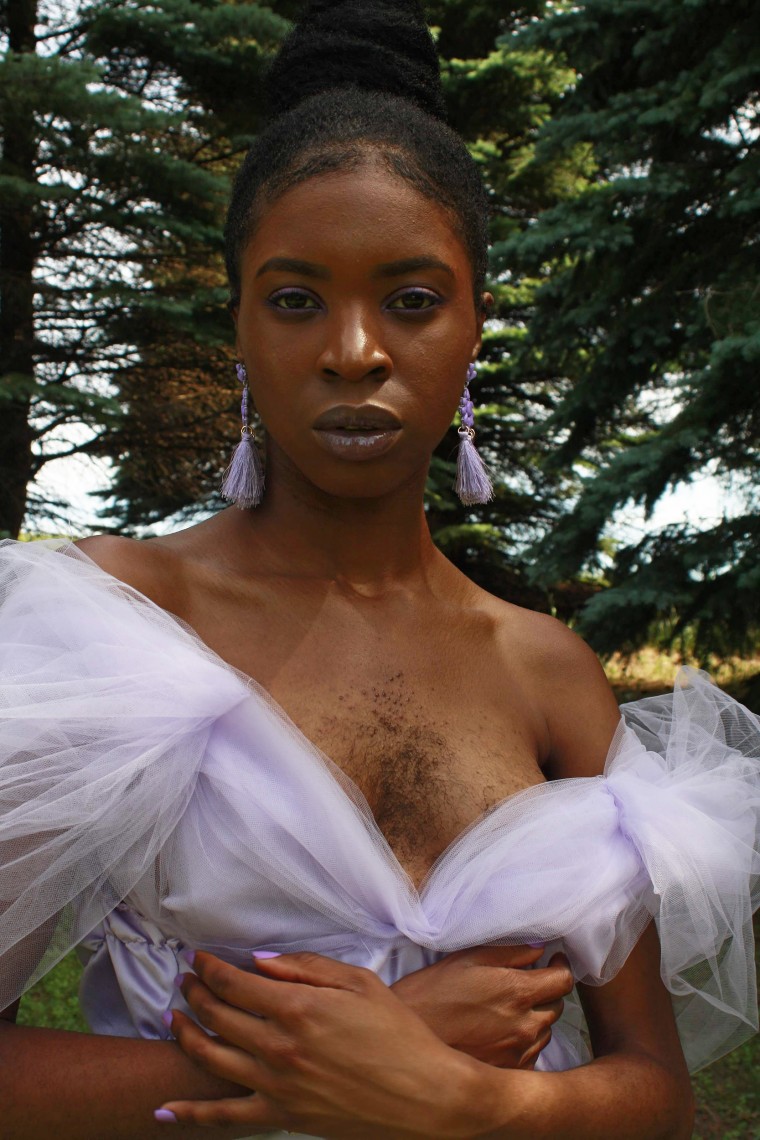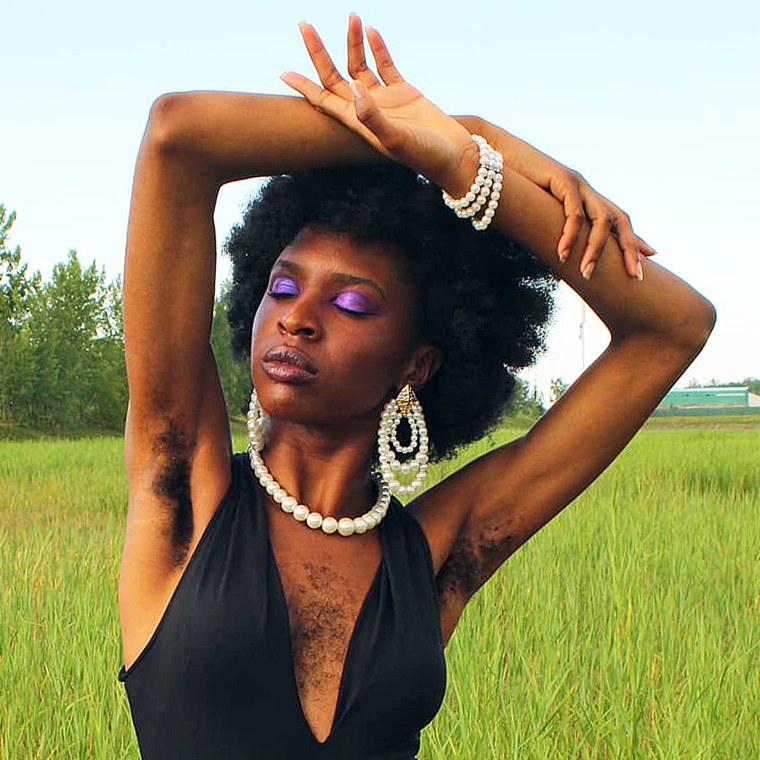Esther Calixte-Bea was 11 years old the first time she waxed her chest. The dress she’d planned to wear for sixth grade graduation had a scooped neckline, and she worried her classmates would notice the curly, dark hair, which began to emerge earlier that year.
By that age, she was already well-aware of the stigma surrounding body hair that it was masculine and unhygienic. And since she had no intention of becoming the subject of ridicule, she and her mom had it removed by an aesthetician.
By the time she was in high school, Calixte-Bea had adopted an involved beauty routine: She'd shave and epilate her chest, legs, armpits and sideburns, which grew in unevenly every two days.
“I started hating my body,” Calixte-Bea, 27, of Montreal, tells TODAY.com. And she began to resent the hair that seemed to taunt her every time it grew back, somehow appearing coarser than the time before.
Soon enough, the constant shaving and epilating made the soft skin on Calixte-Bea’s chest especially sensitive. She noticed a series of bumps that turned red whenever her clothing rubbed up against it. And when the level of friction was especially high depending on clothing material or how much she moved, she’d get pimple-like bumps, filled with puss.
She tried to cut back on shaving as much as she could and covered up instead. “I wouldn’t wear certain clothes,” Calixte-Bea recalls. “I wouldn’t even go swimming anymore because I was tired of removing (the hair).”
But a time would inevitably come when an outfit or occasion called for her to be hairless again, and the removal routine would resume.
This was women’s work, Calixte-Bea was taught. Being beautiful was laborious, but she was burning out and knew she couldn’t continue like this.

Reworking her mindset
In university, Calixte-Bea was determined to work on her self-esteem. The amount of body hair she had seemed to have multiplied just before school started, and she couldn’t keep up.
“I started to have a little crisis inside me,” she said. “That’s when I started really questioning why I was shaving and for who I was doing this,” she says.
Calixte-Bea came up with affirmations she’d repeat to herself daily about her worthiness. And she wrote lists of all the things she disliked about herself before rewriting the same list, this time labeling them as the things she loved most.
“How is it possible that in society they tell me that I shouldn’t have body hair, but I remove it and then it grows back? If women aren’t supposed to have it, why is it growing back?” Calixte-Bea remembers thinking at the time.
She told herself she’d be the authority on what made her beautiful moving forward. But living it out was another thing entirely.
To hold herself accountable, Calixte-Bea launched the Lavender Project in 2019. For it, she photographed herself showcasing her body hair and posted online. “(I was) finally embracing (my hair) and starting this conversation around body hair and femininity.”
Since posting the Lavender Project, Calixte-Bea hasn’t shaved or waxed.
Finding the root cause
Genetics always seemed the most probable reason for her body hair. And while Calixte-Bea’s mom didn’t have chest hair, she was always hairier than her sisters. Calixte-Bea’s dad was also covered in body hair, so for a while, she didn't feel compelled to investigate further.
But in 2022, her aunt who lives in Côte d’Ivoire told her about the tribe Calixte-Bea’s paternal family descends from, called We. All the women, Calixte-Bea learned, had body hair that resembled hers.
“In my great-grandmother’s time, it was seen as beautiful,” she says.
"Increased hair growth can be hereditary," Dr. Deena Gupta-Adimoolam, specialist in endocrinology, diabetes, metabolism and obesity medicine, tells TODAY.com. "There are certain ethnic populations more susceptible to increased hair growth than others, specifically those of Mediterranean, South Asian and Middle Eastern descent."
Bloodwork confirmed this was likely the case in Calixte-Bea’s family.
Her endocrinologist ruled out PCOS and other illnesses typically associated with excess body hair but found Calixte-Bea had elevated levels of a hormone called DHEAS, which is typically harmless.
"There are some genetic mutations that can be associated with higher levels of hormones, like DHEAS." Gupta-Adimoolam confirmed. So, the hormone may have been elevated in her family and ancestors, too.
Committed to leaving her hair untouched, Calixte-Bea declined the hair-thinning medication her doctor offered her.

Embracing the hair
Calixte-Bea is now 27 years old with an impressive social media presence dedicated to body hair activism. “By making content, I really tried to remove the shame,” Calixte-Bea says.
She recognizes that for some women, excess body hair comes with other health issues that she’s lucky not to have, so she reminds her followers that people’s relationships with their hair can be complicated and emotional.
Calixte-Bea's not concerned with whether her followers choose to keep their body hair or remove it, but she aims to show how proud she is of hers. In fact, she knew she’d repaired her confidence when the thought of her chest being hairless made her shiver.
“It’s something that I’ve identified as a part of me," she says.
